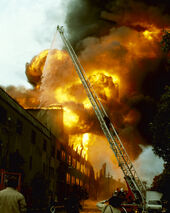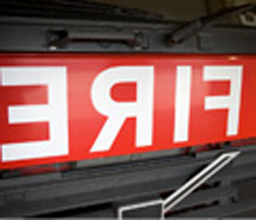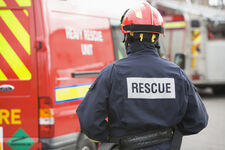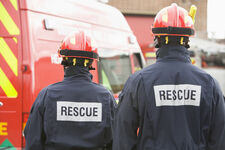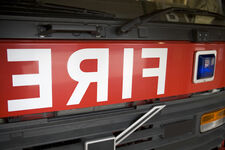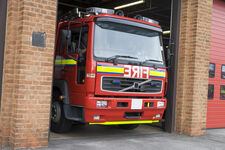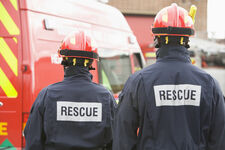History
Changes to the building regulations in 1991 cleared the way for timber frame housing to be built as high as eight storeys in the UK.
This marked a significant change particularly in London where timber frame building methods had effectively been outlawed since the Great Fire and Sir Christopher Wren’s 1667 Building Act a year later.
Since then timber frame building methods have proliferated, particularly growing in popularity among social housing landlords.
The perceived environmental benefits derived from using well-sourced timber and some coaxing from central Government helped the system gain a foothold in the multi-storey residential arena.
Fire tests
Despite this, timber frame buildings are still struggling to shake off nagging suspicions that they are vulnerable to fire.
Fresh worries were stoked by a steady rise in the number of fires engulfing timber frame construction sites and completed buildings.
Full-scale fire tests of a specially constructed six-storey building at Cardington in 1999 were widely disseminated as proof that timber frame housing was as safe as any other technique.
But this test raised several important questions. The most glaring was not deemed to be within the terms of the test and so escaped mention in the final report.
What happened after the test proved as significant as any of the official results as London residents found out almost to the cost of their own lives.
Several hours after the fire brigade had extinguished the test-building fire, checked for hotspots and declared it safe, a secondary fire ignited setting alarm bells ringing.
Night staff raised the alarm and fire services rushed to the former aircraft hangar test scene where they spent the next five hours tackling the blaze. On investigation it turned out the fire reignited in a cavity on the third floor, spreading quickly through the upper floors to engulf the entire building.
Fires raise concerns
In 2007, a timber frame residential block in Croydon, south London, burned to the ground in almost identical circumstances. The fire brigade put out a small fire and departed. Families returned to their homes only to have a narrow escape when it re-ignited and dozens were left homeless.
Then a huge blaze at Colindale in North London on 12 July 2006 exposed the serious dangers presented by buildings under construction. In this case an entire partially built six-storey building burned to the ground in less than 9 minutes.
Including the Colindale incident, there have been five serious fires in timber frame building under construction in London alone. These were at sites in Charlton, Hackney, Peckham and Camberwell.
The blaze in Peckham in November 2009 burned with such ferocity that it swept to a nearby housing estate, forcing an emergency evacuation of 300 people.
More than 150 firefighters struggled to contain the blaze which took hold in the early hours.
London Assembly concerns
These incidents prompted the Greater London Assembly to launch a detailed investigation into fire safety in high-rise and timber frame buildings in 2009.
The report was published at the end of 2010 and called for an urgent review of the Building Regulations.
Government rejected this.
Changes to the building regulations in 1991 cleared the way for timber frame housing to be built as high as eight storeys in the UK.
This marked a significant change particularly in London where timber frame building methods had effectively been outlawed since the Great Fire and Sir Christopher Wren’s 1667 Building Act a year later.
Since then timber frame building methods have proliferated, particularly growing in popularity among social housing landlords.
The perceived environmental benefits derived from using well-sourced timber and some coaxing from central Government helped the system gain a foothold in the multi-storey residential arena.
Fire tests
Despite this, timber frame buildings are still struggling to shake off nagging suspicions that they are vulnerable to fire.
Fresh worries were stoked by a steady rise in the number of fires engulfing timber frame construction sites and completed buildings.
Full-scale fire tests of a specially constructed six-storey building at Cardington in 1999 were widely disseminated as proof that timber frame housing was as safe as any other technique.
But this test raised several important questions. The most glaring was not deemed to be within the terms of the test and so escaped mention in the final report.
What happened after the test proved as significant as any of the official results as London residents found out almost to the cost of their own lives.
Several hours after the fire brigade had extinguished the test-building fire, checked for hotspots and declared it safe, a secondary fire ignited setting alarm bells ringing.
Night staff raised the alarm and fire services rushed to the former aircraft hangar test scene where they spent the next five hours tackling the blaze. On investigation it turned out the fire reignited in a cavity on the third floor, spreading quickly through the upper floors to engulf the entire building.
Fires raise concerns
In 2007, a timber frame residential block in Croydon, south London, burned to the ground in almost identical circumstances. The fire brigade put out a small fire and departed. Families returned to their homes only to have a narrow escape when it re-ignited and dozens were left homeless.
Then a huge blaze at Colindale in North London on 12 July 2006 exposed the serious dangers presented by buildings under construction. In this case an entire partially built six-storey building burned to the ground in less than 9 minutes.
Including the Colindale incident, there have been five serious fires in timber frame building under construction in London alone. These were at sites in Charlton, Hackney, Peckham and Camberwell.
The blaze in Peckham in November 2009 burned with such ferocity that it swept to a nearby housing estate, forcing an emergency evacuation of 300 people.
More than 150 firefighters struggled to contain the blaze which took hold in the early hours.
London Assembly concerns
These incidents prompted the Greater London Assembly to launch a detailed investigation into fire safety in high-rise and timber frame buildings in 2009.
The report was published at the end of 2010 and called for an urgent review of the Building Regulations.
Government rejected this.
